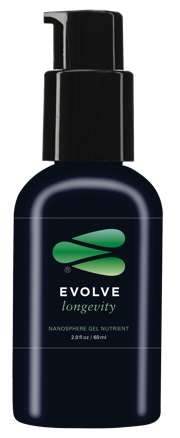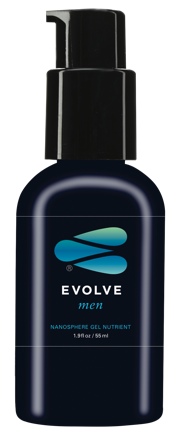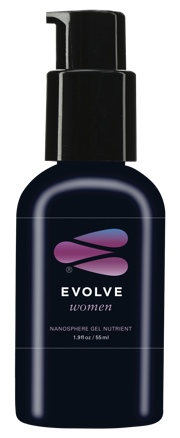NanoSphere Health Sciences provides the world’s first and only delivery system platform that supports even hard-to-absorb, poorly soluble and unstable nutraceuticals. These include fat-soluble vitamins, fatty acids, minerals, phytochemicals, peptides and botanical extracts. 'Although significant efforts and investments have been made in the pharmaceutical industry, NanoSphere Health Sciences is the first to use nanobiotechnology to improve the bioavailability and efficacy of a full range of dietary supplements,' said Dr Kaufman.
'This disruptive technology introduces significant new opportunities in nutritional supplementation, and will help to elevate the growth potential of the nutraceuticals industry. What we’re doing is transforming the way that the dietary supplement industry delivers its benefits. As we go further into the nutraceutical era, which is estimated to reach about US$204.8bn by 2017 (CAGR of 6.3%), more and more nutraceuticals, especially phytochemicals, have very bad delivery characteristics. Only a fraction of a given dose actually gets into the system and has an effect.'
He explained: 'For the most part, the dietary supplement industry is not actually trying to ensure that their product actually works; drug companies, by contrast, recognise the need for effective delivery systems. They spend millions of dollars investing in technologies to make their products work. What we’ve done is adapted the most advanced, biocompatible, natural system used in the pharmaceutical industry, using nanoparticles, to encapsulate and protect nutraceuticals and deliver them to where they need to go in the body with six times more bioavailability than traditional capsules and pills.'
For the most part, the dietary supplement industry is not actually trying to ensure that their product actually works
The company is creating a platform to take, for example, fat-soluble vitamins and nutrients, botanicals, extracts and peptides that are hard to deliver and enable them to reach the genetic potential of producing benefits that have been demonstrated only in research and, for the most part, in theory. 'These actives don’t get through the cell wall, across the blood/brain barrier or into the bloodstream like they should and can’t function to their full potential,' says Kaufman, 'so our vision is to make supplements that can be effectively delivered and work as they should.
'As an example, if we look at a multivitamin pill, it’s been discovered that only 45% of people were able to break down the tablet fast enough to be able to absorb the active ingredients into their system. And you can also find examples in which the traditional way of making capsules has caused the same problem. Another problematic factor is that a great many people do not like swallowing pills; so we took the time to develop a delivery technology — liquid NanoSphere Gels — that doesn’t require the end-user to actually swallow a pill or capsule.'
Nano-sizing and encapsulating
The format, essentially, is a highly concentrated gel, which can be delivered in a 250µL dose into the mouth with a pump (behind the back teeth or under the tongue, for example). The NanoSphere Gel formulas require no fillers, binders or other additives, ensuring that only the pure, essential nutrients and therapeutic ingredients are included. These solubilised metabolites enable direct delivery into the system, bypassing much of the destruction that takes place in the liver and the GI tract, and also protects the materials from premature elimination before they can work.

'The nature of our NanoSpheres is that they are formed from natural phospholipids and fatty acids; the phospholipids we use are the same ones that form the protective membrane around the 100 trillion cells of the human body — phosphatidylcholine. In essence, we’re using a biocompatible fatty acid/phospholipid to form spheres that encapsulate your dietary supplement/nutraceutical and carry them, in a more intact way, into the system, so they can actually work,' notes Kaufman. 'It’s a patent-pending technology, so we’re using a lot of dispersion and homogenisation techniques to take the nutraceuticals and protect them and create these NanoSphere Gels that are very concentrated, so you only need a fraction of the dose that you’d need to take using a traditional delivery method.'
Nano fear
Regarding the perceived negative impact of nanotechnology, he admits that it’s a concern. 'What people are oftentimes talking about is the fear of taking a material that has an associated toxicity; and, as particle dimension decreases, the surface area for the same mass increases exponentially, which in turn increases solubility, absorption and biokinetics. Nano-sizing an active increases its effect in the human body. But many of the discussions about toxicity in the literature have been about metals (that are toxic to begin with). And indeed, with those materials, by increasing their surface area, you do increase the risk … and that is something that we’re very concerned about.
So, what we’re doing with our ingredients is, first of all, looking at the maximal amount that could possibly be absorbed, and then researching the forms of those ingredients that are most likely to be non-toxic to the human body — effectively eliminating the potential risk of negative interactions,' says Kaufman.
'We are very conscious of the safety issues regarding nanotechnology; but we also realise that it has been widely investigated and applied to make great forward strides in the personal care industry — and even in the food and beverage industry. We are the first company to adapt this nanotechnology platform for nutraceutical delivery. We can now protect the active ingredients and deliver a full spectrum of moieties to the human body to have a stronger and more immediate effect, and take them in smaller amounts, which makes the overall process much more cost-effective.'
As a consumer, you’re getting more of the nutrient/nutraceutical that you paid for
Kate Sutton, VP of Marketing, added: 'We’re really driving a change; people everywhere take supplements, and our gel product doesn’t need to disintegrate in the same way that pills and capsules do; it’s absorption-ready. A real benefit is that, as a consumer, you’re getting more of the nutrient/nutraceutical that you paid for; our formulas are pure, they contain no fillers or additives or excipients like traditional pills or capsules.
'And it’s convenient! You can take it on-the-go; it doesn’t involve swallowing huge “horse pills” that I know many people have difficulty with; whatever size or shape they come in, it can be both physically and psychologically challenging for many people to take a pill. Ease of use is key, it’s a more advanced technology and you’re getting more of what your body needs. There are a lot of benefits to this application and we’re really excited to be the first company to go to market with it.'
Big Pharma learnings
'What I found amazing,' says Kaufman, 'was that the pharmaceutical industry recognises the need for efficacious delivery techniques because 40% of new drug candidates are not water-soluble; they’re hard to deliver. They’re fully aware that in the absence of effective delivery, there can be side-effects. So, they’ve spent millions of dollars developing technologies — exactly like our NanoSphere Gels — using lipid nanoparticles and phospholipid-based encapsulation (as used to create oral insulin, for example). They’re safe, efficacious, versatile and biocompatible, and they have a high encapsulation efficiency. So what we’ve done is adapted this tried and tested technology, used by drug companies, to deliver a full range and wide spectrum of nutraceuticals.

'We consider ourselves to be a disruptive innovator, bringing a platform to the industry that can incorporate a wide range of nutraceuticals at an industrial level of production by nano-sizing them, protecting them in a lipid membrane nanosphere structure and delivering them, intact, more effectively. In reality, the gut is a horrible place to deliver a material; you have to get past the stomach, past the intestines and survive the hostile gastric environment that can break down and dilute ingredients; they might be prevented from absorption by excretion or metabolic transformation, so you really have to shield or protect them, whatever their destination. And even if and when they get into the bloodstream, you have to make sure that they have a long enough circulation half-life to ensure delivery — or they will fail to reach their target cells. A lot of research shows how these lipid nanoparticles can extend the half-lives of a variety of actives, create higher levels of blood activity and improve the overall level of cell-targeted delivery.'
'The basis of our patent,' explains Sutton, 'is the ability to incorporate nutraceuticals in a delivery technology that improves their trans-mucosal transportation and enables them to cross the protective barrier that surrounds the GI tract and the body’s cells; we’re basically creating a platform to better deliver nutraceuticals across the cell membrane that would normally prevent them from being absorbed and utilised by the human body.'
Applications and products
When asked about using the technology for third-party formulations and products, Kaufman emphasises that for the moment, with the current version of the platform, the company is focusing on its own combination formulations. 'But,' he notes, 'we’re looking into the practitioner market where we’ll be taking the most challenging and difficult individual ingredients and putting them into our delivery technology. Right now, though, we just want to focus on a wide range of hard-to-deliver supplements, putting our primary line of five products in the hands of the consumer.
'We looked at the average consumer to ascertain what they were using, what the market needed and what was popular … and decided to produce a multinutrient offering. This product delivers more than 30 nano-sized nutrient ingredients and, just by taking several pumps a day, consumers can do away with all the pills and capsules that they’re taking on a daily basis.
The consumer doesn’t have to take as much because the delivery technology is much more effective than regular solid dosage formats, which often only deliver less than 15% of the active
'We’re also looking at the energy market. We realised that a large number of people want energy products, so we developed a product specifically for this market that doesn’t contain caffeine but actually improves the way the brain functions (cognition and improved concentration). We’ve also developed gender-specific applications, for the individual needs of men and women, and one for longevity. More and more people are concerned about age-related decline and functionality, and there is a wide range of ingredients that can be used to address this particular condition, such as resveratrol, which is very poorly delivered in traditional dosage forms. We’re being very attentive to the needs of people with our combination products; and, in the future, we’ll be focusing on developing new nutraceuticals with the same technology for health practitioners and people who want to benefit from better delivery systems to get the most impact out of the products they’re taking to improve their lives.'
A revolution in the making
Enhancing the bioavailability and effectiveness of dietary supplements means that more can be done with less. 'We’re actually making a lower dosage more bioavailable,' enthuses Kaufman. 'The consumer doesn’t have to take as much because the delivery technology is much more effective than regular solid dosage formats, which often only deliver less than 15% of the active. Depending on the ingredient and the formulation, we can increase that by 200–600%. So you take less and get a more sustained, better therapeutic effect in the long-term.
In addition, using less active is more cost-effective, and you get more targeted delivery, direct to the cells, where those actives are needed, so we’re making nutraceuticals work better with smaller dosages. Among the delivery technologies being investigated and utilised by pharmaceutical scientists, lipid nanoparticles have taken the lead; the advantages of higher biocompatibility, efficacy, safety and versatility have been well proven by the pharmaceutical industry. And I’m not quite sure why the supplement industry — apart from us — is ignoring this!'

He continued: 'A wise person is going to take a look at the whole technology field and draw on what they need. We can’t just overlook an application because we’re not working with pharmaceutical drug products. Technology is technology; the food industry, for example, is nano-sizing particular ingredient components for better delivery, the same technology is being used to improve flavour delivery … and there is a growing level of interest in this.
'Sadly, though, there are more people writing about the problems of nanotechnology as opposed to the future benefits and positive applications. We’re safely applying this established science, right now in real-time, to improve the delivery of non-toxic products for the better overall health and longevity of regular consumers.'
Both Kaufman and Sutton believe that the development of an enhanced delivery technology is critical for the future success of the nutraceutical industry. 'As we move beyond the established dietary supplements and further investigate more and more botanicals, extracts, phytochemicals and novel ingredients, we can all benefit from a delivery technology like this. Popular ingredients such as curcumin, for example, are widely marketed but difficult to deliver effectively. What we’re doing is going beyond focusing on a single ingredient and making an industrial-scale delivery technology that can be used with a wide range of nutraceuticals, right from the beginning. We’re also using intra-oral gels that preclude the need for softgel capsules to overcome the challenges of actives breaking down prior to delivery,' they note.
Kaufman concluded: 'Offering formulations with up to six times the bioavailability of conventional supplements, we’re looking very carefully at exactly what we’re delivering, checking for possible side-effects and making sure that our products are safe. We’re very concerned about overcoming any potential pitfalls … but we also believe that this technology represents a huge step forward, and it’s important to stay ahead of the game regarding future developments in the dietary supplement industry.
'For things to work they way they should, they have to be delivered to the right site in the body at high enough levels to be efficacious — and that’s exactly what our NanoSpheres do.'
